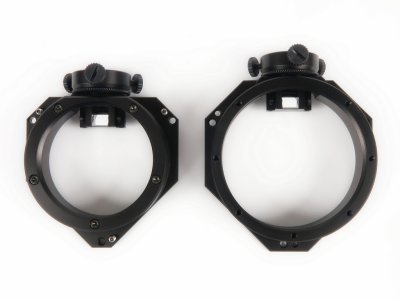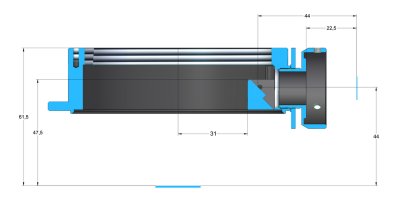The C5-OAG (left) and C5-OAG on the C5 camera with XL
External Filter Wheel Off-axis guider adapters provide many advantages compared to
standalone guiding telescopes, especially the fact that the guiding
camera uses the same optics like the main camera. This means the
guiding corrects also for many subtle effects like optical tube and
focuser flexure etc.
But as mentioned earlier, OAG adapter in general increase the
demand to the field of view. The used optics must cover the reflecting
mirror with good-enough image to be functional.

Comparison of the C4-OAG (left) and C5-OAG
(right) Standalone guiding telescope typically flexes differently than the
main OTA and also the junction between both telescopes introduces some
angular differences as the telescope tracks the object. So, guiding
using standalone telescope typically leads to slight shifts of the
main telescope field of view through observing time.
On the other side, guider telescope can have shorter focal length
and thus greater field of view compared to main OTA, which makes it
easier to find bright enough pointing star. But the necessity to
attach it to the main telescope increases the complexity, weight, and
of course cost of the observing setup.

Location of the mirror in the C5-OAG The C5 OAG mirror is located 31 mm
from the optical axis. The 10 × 10 mm mirror, tilted
45°, thus reaches up to 38 mm from the optical axis. The required diameter of
the telescope field of view is 76 mm, so
the OAG mirror is well covered.
| 